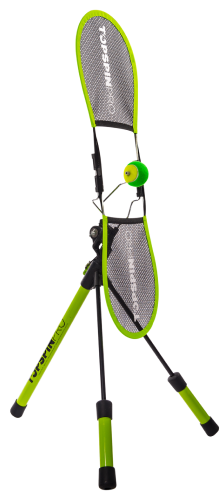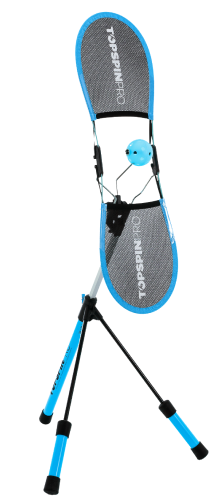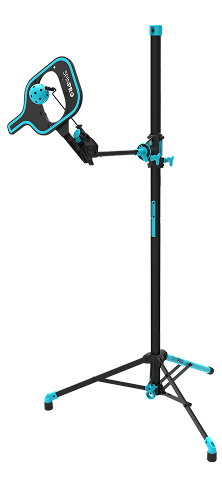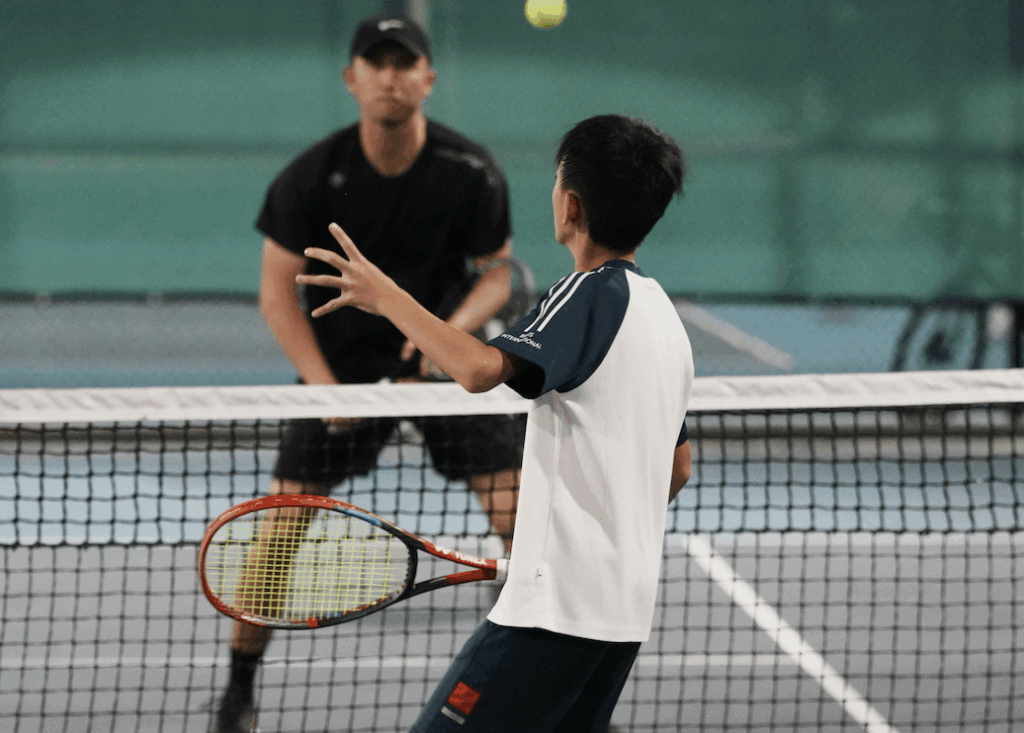They say, “Practice makes perfect,” but let’s be honest, perfect doesn’t exist! What does exist, though, is mastery, a level of skill where your shots feel automatic, reliable, and effective under pressure. So how much practice does it really take to master a tennis shot? Is it hundreds of reps? Thousands? Let's look at the numbers.
How Many Repetitions?
You’ve probably heard of the “10,000-Hour Rule”, the idea, made famous by Malcolm Gladwell in Outliers, that it takes roughly 10,000 hours of practice to master a skill. This concept is based on the work of psychologist Anders Ericsson, who highlighted that it’s not just about the number of hours, but the quality of those hours. He called it deliberate practice: focused, purposeful repetition with constant refinement.
While the 10,000-hour rule has been debated and often misinterpreted, its core message still rings true: real progress comes from intentional, high-quality practice. In fact, when it comes to skill development, repetitions may be a more practical measure than hours because reps can be directly linked to the quality and focus of your training. At TopspinPro, this philosophy is at the heart of everything we do. We don’t just encourage more reps, we emphasize smarter, more purposeful reps that help players improve more efficiently and build lasting skills.
So how many reps does it really take to master a tennis shot and what does each stage of repetition actually develop?
Why the Number of Reps Isn’t the Same for Everyone
Whether you’re refining your forehand, sharpening your serve, or developing a consistent backhand slice, the answer lies in understanding the relationship between quantity, quality, and the individual athlete.
There’s no universal number that guarantees mastery for everyone. For one player, 5,000 focused reps might result in mastery. For another, it may take 10,000-20,000. Why? Because improvement depends on a range of variables:
• Natural coordination and athletic ability
• Body awareness and kinesthetic feel
• Previous sports background
• Learning style and ability to self-correct
• Access to coaching, feedback, and training aids
• Consistency and frequency of practice
Some players seem to “get it” in a few sessions, they pick up timing, spacing, and swing mechanics quickly. Others require longer periods of repetition and more structured guidance. That’s not a weakness; it’s just individual learning curves in action.
But one truth holds for everyone: repetition without intention won’t lead to mastery. It’s not just about hitting a thousand balls. It’s about what you’re doing with each rep the level of focus, feedback, and adjustment you’re applying.
That’s why breaking the journey into stages, from initial learning, through repetition and refinement, all the way to pressure-tested match trust is so helpful. Each stage builds specific layers of skill: mechanics, timing, consistency, adaptability, and finally, reliability under pressure.
So while there’s no fixed number of hours or reps, the real key is knowing where you are in the process and training accordingly. The better you align your practice to your current stage of development, the faster and more lasting your improvements will be.
Let’s break it down and look at some numbers you can use as a guideline:
Stage 1: Learning - 100–500 Repetitions
At this stage, you’re just learning the shot. It’s brand new, and each repetition will likely feel a little different...or sometimes very different! This is the most important phase for laying down the correct foundation, but it’s also where many players give up because it can feel awkward or frustrating. It's also one of the stages where players tend to try to rush their progress rather than staying focused on repetition of the correct technique. Whether it’s a topspin forehand, slice backhand, or kick serve, these early reps are all about:
- Learning basic mechanics
- Building muscle memory
- Understanding the feel of the shot
✅ What This Stage Develops:
- Initial technique - Understanding the correct shape
- Other fundamentals -Such as grip, stance, and contact point
- Footwork - Coordination between footwork and swing
🚫 Common Mistakes:
If bad habits develop during this early stage, they can become deeply ingrained and much harder to correct later on. That’s why getting the right guidance from the start is essential. Working with a coach, recording and reviewing video footage, or even practicing in front of a mirror can help you spot and correct technical flaws early. Tools like the TopspinPro are especially effective at reinforcing correct swing paths and building muscle memory in a consistent, repeatable way.
It’s also wise to resist the urge to jump into points play too soon. Points or drills can force you into instinctual movements and if those instincts are based on incorrect technique, it may undo your progress. Focus instead on slow, deliberate reps until your mechanics are solid and reliable. Build it right now, so you can trust it later.
Extra Tips: For a step-by-step roadmap on how to improve quickly during this foundational stage and how to continue progressing through the next phases of development be sure to check out this in-depth guide. It’s packed with practical tips, drills, and insights to help you build solid technique, accelerate your learning, and avoid common pitfalls that hold players back: How To Improve Tennis Fast: Tennis Skill Progression Guide
Stage 2: Refining - 500–2,000 Repetitions
Once the basic movement pattern is in place, repetition becomes all about refinement. These reps help you move from “I understand the shot” to “I can repeat it with control.” You begin to hit more balls cleanly into the court, with improving placement, timing, and intention.
This stage often involves structured drills like basket feeding or slow-paced rallying, where you can focus on specific elements without the unpredictability of live play. It’s here that you start to experience moments of flow when your technique and timing begin to feel smooth and repeatable.
✅ What This Stage Develops:
• Consistency - Under controlled conditions (basket feeding, slow rallies)
• Adaptability - Learning to adjust for spin, pace, and target zones
• Confidence - Trust in your swing mechanics, which reduces hesitation and overthinking
• Footwork - Movement patterns you start to pair clean strokes with purposeful movement
🚫 Common Mistakes:
This is the stage where players often start to feel like they “own” the shot — it’s working in drills, feeling fluid, and producing results. But this can create a false sense of mastery. Just because a shot feels good in practice doesn’t mean it will hold up under pressure, in a match, or against unpredictable opponents.
One of the biggest mistakes players make here is transitioning to match play too soon, thinking the shot is match-ready when it’s not yet reliable in dynamic conditions. In reality, the shot still needs further exposure to variation — such as hitting on the run, responding to different spins and heights, or executing it after a tough rally.
This stage should focus on progressive overload: adding layers of challenge that stretch your control without overwhelming your technique. Think of this phase as “stress-testing” your shot in safe, structured environments, so by the time you take it into match play, it’s not just functional, it’s dependable.
Extra Tips: At this stage using compression balls can help with your development of spin and control. Here's some simple progressions you can use for groundstroke practice:

Stage 3: Integrating - 2,000–5,000 Repetitions
At this point, your shot is more than just technically sound, it’s usable in rallies and drills with movement, but it’s still not fully battle-tested under pressure. This stage is all about taking your shot from “mechanically solid” to “match functional.”
Now, you begin integrating it into live situations: rallying with partners, point-based drills, and simulated match scenarios. This is where the shot must hold up against unpredictability such as incoming pace, spin, awkward feeds, and reactive footwork.
✅ What This Stage Develops:
• Shot selection – Learning when and why to use the shot
• Timing and rhythm – Adapting to real-time ball speeds, opponent variety, and hitting from varied positions
• Variability – Can you change direction, shape, or depth while maintaining form?
Most importantly, you’re no longer just “hitting the shot” , you’re learning how to use it as a weapon or tool that supports your overall game style. This is where strategy and identity start to form. You begin to recognize how each shot contributes to your patterns of play and where to use it best.
🚫 Common Mistakes:
Now that you feel confident using your shot under pressure, it’s crucial to ensure your technique is still holding up. This is often where things can go wrong, players rely on instinct in high-stress situations, and if the foundation isn’t solid, technical flaws can start to creep back in. This is where regular use of video analysis can help you stay on track. Not only can you use it to help keep an eye on your technique, it's here where it's most useful for strategy development. Here's an in-depth guide: Analyze Your Tennis With Video For Dramatic Improvement
Stage 4: Mastery - 5,000–10,000+ Repetitions
At this stage, your shot isn’t just a skill, it’s part of your tennis identity. You’ve hit it thousands of times in practice, drills, and match play. It’s become consistent and dependable. But the ultimate goal is to trust it fully, even at 5–6 in a third-set tiebreak, when the pressure is at its peak. This level of automaticity only comes from deliberate, pressure-tested repetition over time. It’s the difference between players who hope their shot holds up and those who know it will.
✅ What This Stage Develops:
• Reliability – Your technique stays solid, even under stress.
• Confidence – You trust your training and stay composed in high-stakes moments.
• Tactical Fluency – You understand when and how to use the shot for offense, defense, or to neutralize your opponent.
These are the reps that directly impact match results, not just because your mechanics are sound, but because your strategy, mental resilience, and decision-making are seamlessly connected to your technique. You’re not just hitting the shot, you’re hitting it with purpose, at the right time, and with full belief behind it.
🚫 Common Mistakes:
This is also the stage where many players plateau. After reaching a level of reliability, they assume the job is done and begin to take their progress for granted. But mastery isn’t permanent. If you stop refining your technique, especially under evolving pressure, performance can slip. In reality, this is when mental toughness and technical discipline must evolve together. You need to continue testing and sharpening your shot, especially under fatigue, stress, and unfamiliar conditions, to keep it match-ready.
✅ Key Reminder: Mastery is not a finish line. It’s a commitment.
And remember “perfect” doesn’t exist. Even the best players in the world are constantly refining their strokes. What sets them apart is not perfection, but consistency under pressure with a relentless drive to improve.
Summary - Practice With Intention
Progress takes time, but following the right timeline can make it happen much faster. The key is knowing where you are in your development and training specifically for that stage. Skipping steps or overloading too soon doesn’t accelerate progress, it often leads to frustration, plateaus, or worse, deeply ingrained bad habits.
Mindless repetition won’t make you better. It’s deliberate, structured practice that creates real improvement:
• 🎥 Use video feedback to spot and correct flaws in real time
• 🎯 Train with purpose, not just volume, every rep should serve a goal
• 🔄 Combine technical drills for mechanics with variable drills for adaptability
• 🔥 Simulate match pressure to build mental resilience and transfer skills to real play
And remember, the numbers stack up! If you train with intent. For example, hitting just 100 forehands per session, 3 times a week, over the course of a year adds up to over 15,000 quality reps. That’s how mastery is built....one focused session at a time.
The use of training aids such as the TopspinPro can help you with extra repetitions and ensuring you are using the correct biomechanics during your practice. It also allows you to sneak in some extra practice between on court sessions:
TOPSPINPRO BEGINNER COURSES
if you need a little extra help to guide you through stage 1 and 2 we use the science of progressions in our TopspinPro Online Courses. Check them out for some in-depth help with developing your shots:
FAQs
-
How many repetitions does it take to master a tennis shot?
Mastery isn’t just about the number of repetitions but also the quality and focus of practice. It involves thousands of high-quality reps, transforming technique into habit through deliberate practice, which is focused, purposeful, and constantly improving.
-
What is the significance of Stage 1, 100-500 repetitions, in learning a tennis shot?
Stage 1 is crucial for laying the correct foundation, focusing on learning basic mechanics, building muscle memory, and understanding the feel of the shot. It’s important to avoid rushing and to focus on correct technique to prevent ingraining bad habits.
-
What developments occur during Stage 2, 500-2,000 repetitions, in refining a tennis shot?
Stage 2 focuses on refining the shot for consistency, adaptability, confidence, and footwork. It’s about perfecting the shot under controlled conditions and avoiding transitioning to match play too soon, as the shot still needs exposure to variations.
-
How does Stage 3, 2,000-5,000 repetitions, integrate the shot into match play?
Stage 3 involves integrating the shot into live situations, focusing on shot selection, timing, rhythm, and variability. This stage is about using the shot as a weapon, ensuring it holds up under pressure, and aligning it with your overall game strategy.
-
What characterizes Stage 4, 5,000-10,000+ repetitions, and the concept of mastery?
Stage 4 is about achieving reliability, confidence, and tactical fluency, ensuring the shot is dependable under stress. Mastery involves continuous refinement and testing under evolving conditions, recognizing that improvement is ongoing and mastery is a commitment.
Enjoyed this article?
Be sure to sign up for our newsletter and we'll keep you up to date about new posts



